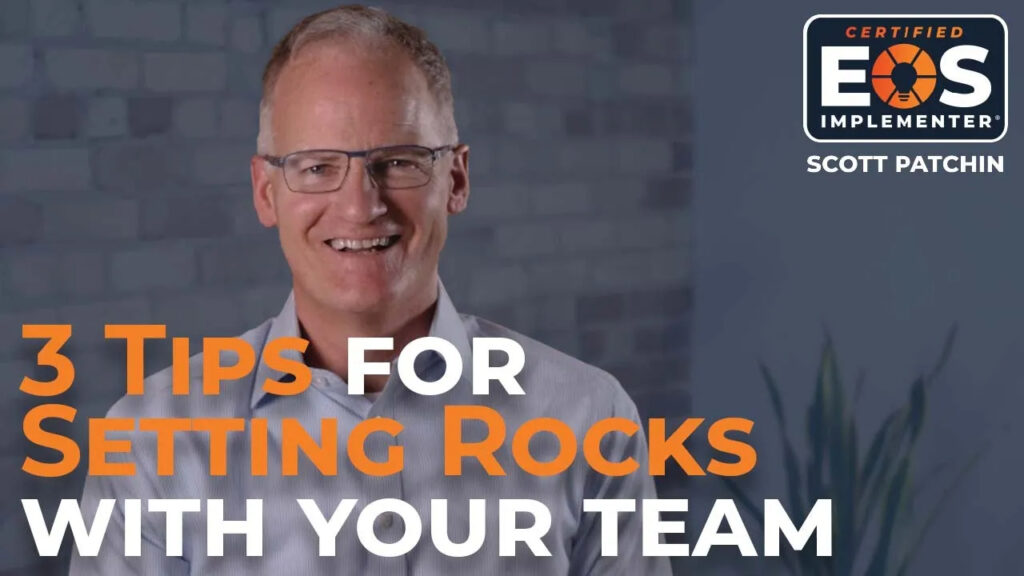Cascading EOS is about completing three main tasks: teaching the tools to your team, coaching them through barriers they encounter when using the tools, and ultimately watching them become such experts they can go through the same process with their teams. While this might sound simple on paper (you can thank Gino Wickman for that!), like anything else, it isn’t nearly so simple, especially with rocks.
In particular, one of the most common questions I get about cascading rocks is, “How do I get my team to come up with their own rocks?” It’s one thing for a leader to tell their team, “Here’s what you need to work on.” Transitioning to team members independently establishing their areas for improvement is a totally different ballgame.
Let’s go back to the basics for a second.
Establish Where Rocks Come From
Your job is to teach them the “why” and the “how we use them” for all the core tools: VTO, accountability chart, rocks, L10, and scorecard and coach your team on using them. Once that is done, everyone starts thinking like a leader and jumps in and starts acting like a mini you. Right? Most of the time it is not that easy.
In general, there are three main sources of rocks:
- Goals,
- Issues, and
- Incomplete rocks pushed from prior quarter.
Until your team understands the connection between goals, issues, and their work, they will likely just see rocks as something you assign to them.
A key first step is starting an L10 with your team. In the same vein, get in the habit of reviewing the VTO with them quarterly. Regular interaction with the VTO will help them understand it better and—eventually—start making the connection between their work and achieving the plan outlined by the VTO. Remember, we have to repeat something 7x before someone remembers it. Be patient, persistent, and passionate about the plan.
Tips for Cascading Rocks
After doing the basics I outlined above, there are a few steps leaders can follow to cascade rocks to their teams. Here are a few tips on how to strengthen their plan ownership to the point they’re using it to create their own rocks.
- Start a quarterly rhythm with your leadership team of generating an issues list before the quarterly. Meet after the quarterly to review which issues became rocks and which issues team rocks need to address in the coming quarter.
- When you’re ready, start quarterlies with your team using the standard quarterly agenda so this goes beyond a VTO review. This is a time to step back to review the performance of the team, review (and connect with) the VTO, and define the rocks for the next quarter.
- When your team is ready (usually 1 to 3 quarters after you launch it with them), encourage them to complete steps #1 and #2 with their teams. By that time, they should have a solid understanding of how goals, issues and rocks are connected and be able to relay that to their own teams.
Effectively cascading to your team requires you to effectively perform the roles of teacher, facilitator, and coach. The good news is your EOS implementer is skilled at all three. Don’t be afraid to ask them for help if you need it.



